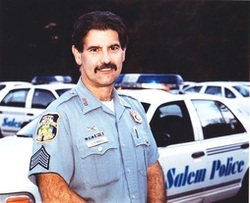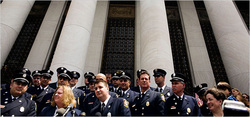
In June of 1892, 30 year old Homer Plessy was jailed for sitting in the white’s only car of the Louisiana RR. Louisiana had previously passed the Separate Car Act that segregated whites and blacks. The case eventually made its way to the Supreme Court and in a land mark decision in 1896, the court ruled in a 7-1 decision, “A statute which implies merely a legal distinction between the white and colored races has no tendency to destroy the legal equality of the two races”. Essentially, the Supreme Court set the precedent that separate but equal facilities for blacks and whites were constitutional.

In 1964, then President Johnson was successful in gettig the Civil Rights Act of 1964 passed. This act outlawed major forms of discrimination against racial, ethnic, national and religious minorities and women. It ended unequal application of voter registration requirements and affirmed Brown by outlawing racial segregation in school and the work place.


In reviewing the case in 1978, the Supreme Court upheld affirmative action, however it ruled that specific quotas, such as the 16 out of 100 seats set aside for minorities by U Cal Davis, was illegal. Essentially, you can establish goals, but not quotas. Bakke was eventually admitted to U Cal Davis and graduated in 1982 but not without a final fight with U Cal. U Cal refused to pay his legal fees and both parties went back to court. In January of 1980, Bakke was awarded $183,089. He eventually went on to the Mayo clinic in Minnesota as an anesthesiologist.
In 1996, U Cal Board of Regents voted to end race as a factor in admissions. From this case it is evident that quotas do not end discrimination, they are a form of discrimination.

In 2011, twenty white firefighters settled their reverse discrimination suit with the city of New Haven, Ct. In 2004, the city gave a promotional test to 118 candidates, 27 of whom were black. None of the blacks scored high enough to qualify for the 15 available positions and all 20 of the plaintiffs did. As a result of no black qualifying, the city civil service board decided to scrap the test results and promote no one. The case went to the US Supreme Court which ruled 5-4 in favor of the firefighters and was remanded to the lower courts to determine damages. In 2011, the city settled with the firefighters for $2 million in back pay and $3 million in legal fees.
In June of this year, the US Supreme Court sent a case challenging the University of Texas Austin’s use of race in admissions back to an appeals court. The lawsuit, Fisher v. University of Texas at Austin, bypassed the white female plaintiff in favor or black applicants who were not as qualified. The University was using race as a criteria for admission. By sending the case back to the appeals court (7-1 decision), the “reviewing court must ultimately be satisfied that no workable race-neutral alternatives would produce the educational benefits of diversity,” wrote Justice Anthony Kennedy.
The court made it somewhat harder for schools to defend race-based preferences in admission—but not impossible. Now schools have to show that “no workable race-neutral alternatives would produce the educational benefits of diversity;” in other words, the use of race in admissions is a last resort.
In 2003, Us District Court Judge Richard Sterns ordered the Boston Fire Department to hire five white men as firefighters who were rejected in 2000 because they were white. The plaintiffs had all scored higher than black candidates who were hired from the same testing procedure. The department had been operating under a federal racial quota order (Beecher Decree) since 1974 (prior to the Bakke decision) which required the Boston Fire Department to hire 1 minority for every 1 white firefighter (Boston Globe). At the time Blacks and Hispanics made up 39% of the fire department which was more than the city population percentage.
Does protecting minorities discriminate against the majority. More than 40 years, and scores of lawsuits later, the question remains unanswered. Meanwhile, more Americans have come to believe that affirmation action is no longer necessary, and that instead of leveling the playfield for minorities, it unfairly punishes whites. I look forward to the day that a box for race is no longer needed in any application in the US.
 RSS Feed
RSS Feed
